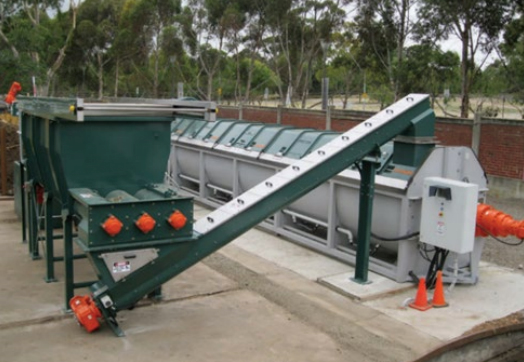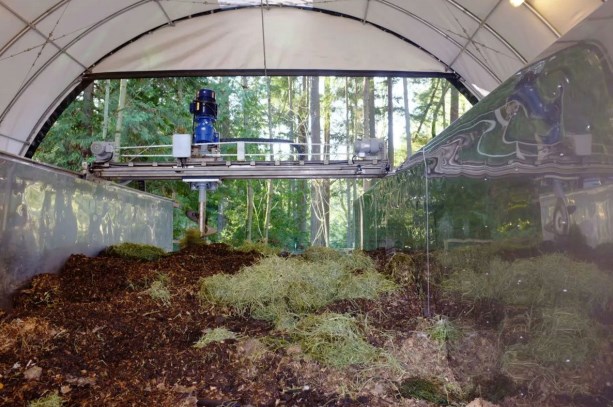Alternative equipment is being considered to get the future On-Island Compost Facility up and running.
The facility (OICF), which would be located on the site of the Recycling Depot, is one of several capital projects currently underway by the municipality (BIM). Once completed it will be able to process the island’s organic waste, such as food scraps and yard trimmings, which would be turned into a usable soil. The facility is also billed as a way to reduce greenhouse gases, and result in savings from the current method which requires hauling this waste off-island.
The project has been a long time in the making, the idea first being envisioned in 2011 before being fleshed out in more detail through the On-Island Compost Facility Working Group in 2015. A feasibility study was completed in 2020, and council committed to financial support of the OICF the next year.
Based on study results, the machinery chosen to perform the composting work was the ‘Hot Rot’ in-vessel compost system. The estimated costs for the Hot Rot and building to house it was $1,528,900. A successful funding application to the Clean BC Organics Infrastructure Grant would cover the majority of costs at $1,019,266, with BIM borrowing $409,634 and the Knick Knack Nook – who have been major proponents of the project since the start – contributing $100,000 of their own.
However, after analyzing updated estimates on how much organic waste is currently being produced, the original plan for a single Hot Rot no longer looks sufficient, according to manager of environment and parks planning Carla Skuce. Using the 2018 total of 540 tonnes of waste volume, the feasibility study predicted a 10 tonne annual increase. But last year Bowen’s number was 675 tonnes of organic waste, a mark that wasn’t planned to be hit until 2031/32.
“Part of the issue is that we had very little data to go off of, but we’ve also had a significant population growth. With Covid and everyone staying home there was a large increase in the green waste volume,” says Skuce, adding this number hasn't gone down even as some people return to in-person work.
Along with collections from the FireSmart program, yard waste, and cardboard, the estimated annual volume for this year is 790 tonnes. Hot Rots have yearly capacity of between 800 to 900 tonnes, which Skuce says means proceeding with the original plan would already put the OICF at - or over - capacity as soon as it's open.

Skuce presented a pair of solutions, one of which would abandon the Hot Rot plan in favour of a compost system from Green Mountain Technologies known as ‘Earth Flow’. This equipment had actually gathered favour from the working group originally, but not pursued because of fears over odour control. Skuce says the Earth Flow would now be placed in an air-tight building, so smells – or other environmental concerns such as runoff – shouldn’t be a problem.
A single Earth Flow can process about 1,300 tonnes of waste a year, with the ability to one day modify the composter to double its capacity. Cost-wise the building and equipment is estimated to cost $1,230,940, with BIM’s share of the project at $306,210.
The other alternative would be purchasing a pair of Hot Rots, instead of the singular machine as planned. Skuce estimates this method would run significantly more expensive at $2,406,740, which would increase the municipality’s contribution almost $1 million to $1,287,474. The Clean BC grant can cover a maximum of $1,019,266, and the Knick Knack Nook’s portion is $100,000 regardless of the equipment chosen.
Given this information council approved $5,000 for staff to begin consultation with Green Mountain Technologies to see if the Earth Flow would be a viable solution for the OICF site. These discussions will also fulfill the grant requirement for a “substantial start” to the project by a Feb. 20 deadline.
Once a decision is made, the Earth Flow system is expected to take around three to four months to arrive, while the pair of Hot Rots would be about seven months out. The grant also stipulates the OICF must be completed by March 31, 2024.



